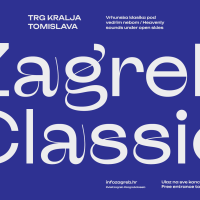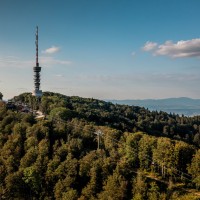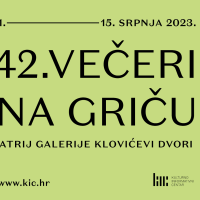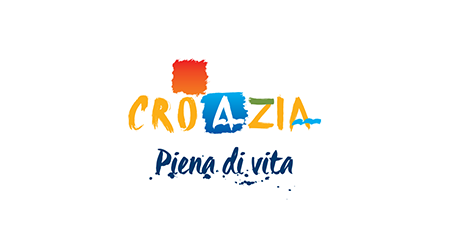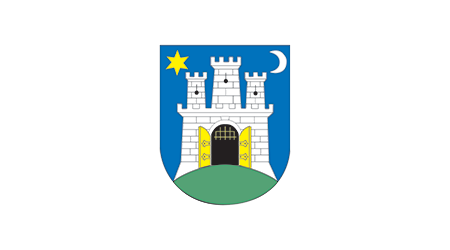Kršnjavi, Quiquerez, Mašić – Dawn Impressions
Zagreb’s Modern Gallery is commemorating the 85th anniversary of the death of Croatian painter and art historian, Isidor Kršnjavi, with the exhibition titled “Kršnjavi, Quiquerez, Mašić – Dawn Impressions”. From November 21st until December 9th audiences can appreciate a symbiosis of works by the three artists which clearly demonstrates that Croatian painting was well on its way towards impressionism.
 Aficionados of the persona and opus of Isidor Kršnjavi will be excited to hear that Zagreb’s Modern Gallery is commemorating the 85th anniversary of the death of the great Croatian painter and art historian with an exhibition titled “Kršnjavi, Quiquerez, Mašić – Dawn Impressions”, which will be open to the public between November 21st and December 9th.
Aficionados of the persona and opus of Isidor Kršnjavi will be excited to hear that Zagreb’s Modern Gallery is commemorating the 85th anniversary of the death of the great Croatian painter and art historian with an exhibition titled “Kršnjavi, Quiquerez, Mašić – Dawn Impressions”, which will be open to the public between November 21st and December 9th.
The exhibition was the ideal opportunity to showcase some of the numerous works by the three aforementioned artists, which are part of the museum’s holdings. The works of all three artists herald the beginning of impressionism in Croatian painting of the 19th century.
Isidor Kršnjavi (1845-1927) was a famous Croatian painter, art historian and politician. His first contact with art was in Osijek, from where he went to Vienna to study history and art history. He continued studying painting at the Munich Academy before moving to Italy where he continued his studies and became quite proficient at copying the old masters.
Apart from being known for his prolific career as a painter, Isidor Kršnjavi is also remembered as a great activist in the area of the development of art in Croatia. He was an art history and archaeology professor at Zagreb University and the first head of Strossmayer’s Gallery of Old Masters. In cooperation with Herman Bolle, he founded the Crafts School (the School for Applied Arts and Design) and the Crafts Museum (Museum of Arts and Crafts). He also exerted a great deal of influence on the development of the city as he helped build many hospitals, libraries and schools. He was an active politician and he also translated books and wrote poetry.
Ferdo Quiquerez was born in Buda in 1845, and he was educated in Zagreb by the painter Muecke. At that time, in 1869, he painted his most notable work – Coming of the Croats at the Shores of the Adriatic Sea, which gained him a scholarship and enabled him to continue his education in Munich. After being educated in Germany and later Italy, he moved to Montenegro where he followed the local military in battles against the Turks as a war painter. After the ‘war phase’ he turned to landscape, cityscape, portrait and self-portrait painting, which became his best works.
The last of the three artists, Nikola Mašić (1852-1902), was also educated in Munich, as well as Vienna and Paris, while he gained most of his practical experience travelling around Italy. Upon his return to Zagreb, he became a professor of drawing, and later on also the head of the Strossmayer Gallery. His paintings are largely characterized by idyllic academism without much dabbing in abstraction or more modern painting styles (predecessors of impression), and his main motifs are idyllic rural studies of the Sava River Valley, as well as studies of ordinary people, predominantly the locals of Lika and Posavina.
The Modern Gallery’s holdings comprise many works by these artists – more than a hundred by Isidor Kršnjavi, 110 by Nikola Mašić, and about ten by Ferdo Quiquerez, but a selection of only forty of the most relevant works has been chosen for this exhibition. It consists mostly of landscapes and portraits by Isidor Kršnjavi, the Sava River Basin landscapes by Mašić, and small-scale landscapes by Ferdo Quiquerez.
Published: 03.12.2012
 Hrvatski
Hrvatski English
English Deutsch
Deutsch Spanish
Spanish French
French Italian
Italian Russian
Russian Korean
Korean Japanese
Japanese Chinese
Chinese Aficionados of the persona and opus of Isidor Kršnjavi will be excited to hear that Zagreb’s Modern Gallery is commemorating the 85th anniversary of the death of the great Croatian painter and art historian with an exhibition titled “Kršnjavi, Quiquerez, Mašić – Dawn Impressions”, which will be open to the public between November 21st and December 9th.
Aficionados of the persona and opus of Isidor Kršnjavi will be excited to hear that Zagreb’s Modern Gallery is commemorating the 85th anniversary of the death of the great Croatian painter and art historian with an exhibition titled “Kršnjavi, Quiquerez, Mašić – Dawn Impressions”, which will be open to the public between November 21st and December 9th.